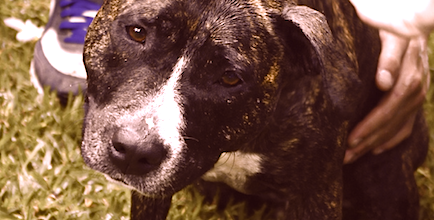Alopecia X: A Story of a Stray Dog, Baldness and Modern Science
Alopecia X used to be a mysterious skin condition, but now modern science throws new light on this strange disease.

When I was training, I worked with many veterinarians.
I remember one vet because of his small bald dog, Eagle, who slept in a basket in the prep room. He’d found her wandering the streets and given her a home. Eager to make up for any earlier neglect, the vet wanted to help Eagle’s coat grow back.
Now, this vet was extremely knowledgeable, yet the cause of his dog’s hair loss had him perplexed. He ran blood tests, skin scrapes and biopsies, and yet was none the wise. In the end, the vet decided his distinctly poodle-like but bald dog was a Mexican hairless in disguise and left it at that.
However, that was more than 2 decades ago, and with the benefit of hindsight and modern science, I suspect Eagle had alopecia X.

Don’t leave your pet’s safety to chance
Sign up for Petful recall alerts today.

What Is Alopecia X?
The name means “baldness of unknown origin,” with alopecia being lack of hair and X representing the unknown. The condition actually goes under several names, such as coat funk in Malamutes, black skin disease in Pomeranians, growth hormone responsive alopecia in poodles, hair cycle arrest… You get the picture.
Eagle looked like she’d had an overenthusiastic clip and boot polish rubbed into her skin. She had a fluffy face and wispy hair on her legs, but her torso and thighs could have been made of leather.
Luckily, alopecia X is purely cosmetic and doesn’t affect the pet’s general health. However, there are hormonal conditions, such as Cushing’s disease or underactive thyroid glands, that can cause fuzzy fur, symmetrical hair loss, pigmented skin, poor coat regrowth after clipping and look similar to alopecia X. But the clue is these diseases usually come with other signs, such as weight gain and excessive thirst.
Breeds such as the American Eskimo Dog, Norwegian elkhound, chow chow, poodle, and Pomeranian are classic candidates for alopecia X. Both males and females are equally affected, and the condition can start from just 12 months old.
Diagnosis and Treatment
At least Eagle’s caretaker knew his dog was healthy. And that’s one good reason to run tests even if they come back normal, because it rules out conditions that superficially look similar but are more serious. An investigation usually involves blood tests (to check organ function and hormone levels), skin scrapes (looking for mites) and skin biopsies.
In Eagle’s day, there was no known treatment — but time has changed this.
First, neutering a dog does the trick in most cases. Experts believe an imbalance of hormones causes the problem by sending the hair shafts into a prolonged sleep so that hair growth stops. Removing the hormones lets the hair shafts wake up and grow hair again.
This sounds great, until you realize alopecia X also occurs in neutered animals. These cases seem to respond well to a supplement of oral melatonin (around 3 mg per day). More than 50% of these patients respond within 6–8 weeks and regrow a luxurious new coat.
This video shows a dog with alopecia, and it’s easy to see the patches of missing fur:

What About Growth Hormones?
You may have seen the name “growth hormone responsive alopecia.” This is a misleading title because researchers now believe the emphasis on growth hormone to be lacking.
This confusion came about because, for a while, scientists found that when they injected patients with growth hormones, the dogs’ coats regrew and became plush again. However, it’s now thought this was a coincidence caused by growth hormones being one of several drugs that act on the adrenal gland (which can kick-start hair regrowth).
This matters because although neutering or melatonin is largely harmless and free of side effects, giving growth hormone or one of these other drugs (such as prednisolone, anipryl, ketoconazole or trilostane) brings potential drawbacks and side effects.
Because alopecia X is purely a cosmetic problem, it’s not the best idea to start the dog on drugs that could endanger his health and induce more serious issues, such as diabetes or Addison’s disease.
After living on the streets, Eagle truly fell on her paws in her new forever home. She went on to lead a long and happy (albeit hairless) life, wearing a variety of stylish knitted coats.

This pet health content was written by a veterinarian, Dr. Pippa Elliott, BVMS, MRCVS. It was last reviewed Dec. 17, 2018.







